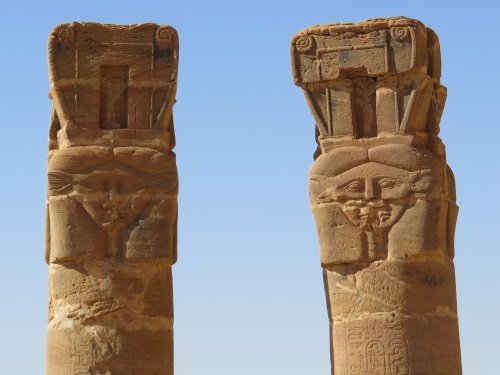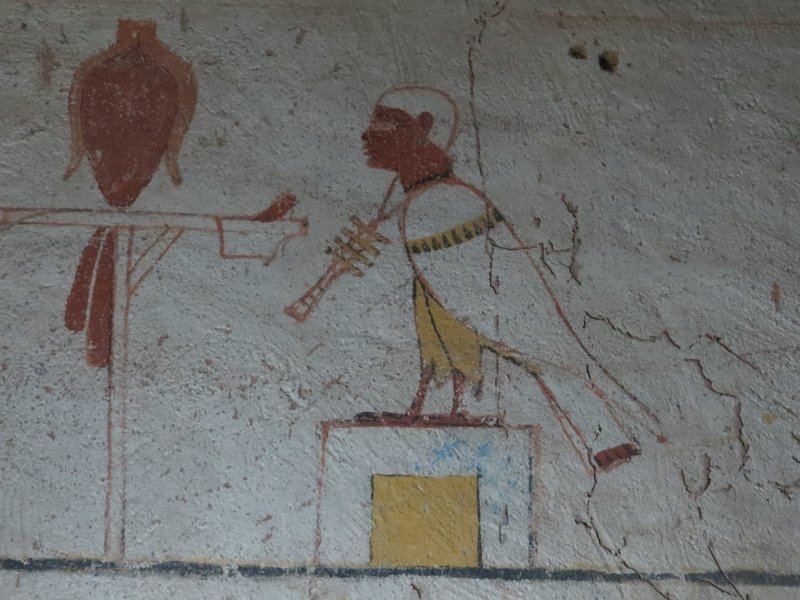Gebel Barkal
was Nubia's Holy Mountain. Its size and shape appealed so much to exploring Ancient Egyptians who came down the Nile, that they started building temples at its foot. It remained a sanctuary to the god Amun for centuries, from the Egyptian "colonization" to the time of the Black Pharaohs when the local Nubian rulers took control over South Egypt and moved their capital to Meroë.
Although the main Amun Temple looks to be well-excavated nowadays, I was amazed at the level of archaeological work still going on. Two teams were busy when I visited: an international group under guidance of the Sudanese Ministry of Antiquities, and an Italian-led group. The Italians were focusing on a building which is being excavated for the first time, although it lies right next to the Amun Temple and also directly at the foot of the mountain.
There were no other people around besides the archaelogists when we visited during the day, but some 50 locals and international tourists showed up later to watch the sunset from the top of the mountain. To me, the site's highlights include the still erect pillars topped with serpents symbolizing the goddess Hathor (see picture below), the hieroglyphs on the column fragments that have fallen down, the finely carved interior of the Temple of Mut and the small pyramid field at the far end of the archaeological zone.

|
Some 10 kms from Gebel Barkal, on the outskirts of a small village, lies El Kurru. This is the oldest among the 5 locations that constitute this WHS. The pyramids here are gone, but the underground tombs that lay beneath them have been preserved well. There are three of these tombs at the site (most travel guides name only two, that shows that important new discoveries are still made in Sudan). The excavation of the third and biggest one is
sponsored by Qatar
.
I was only able to visit the interior of the tomb of Tanwetamani ; that of his mother was undergoing maintenance. It lies deep underground, you go in via a steep stairway. Downstairs the tomb is surprisingly spacious. Ten people fit in easily into either of the two rooms. The walls and ceilings are completely covered in wall paintings of the Egyptian kind, using red, yellow and blue on a white background. The lower paintings (up until 1m from the floor) unfortunately have been damaged by a flooding. This is the best collection of original wall paintings that I saw during my time in Sudan, their colours have been beautifully preserved.

|
Nuri is the third location of this WHS that I visited, doing so at the end of a 2 hour Nile "cruise" that ended at the opposite side of the river from where we started. The other two included sites (Zuma and Sanam) are smaller and barely excavated. Nuri's pyramids are more "Egyptian" in style than the ones at the main Gebel Barkal site: bigger and less steep. They are among the oldest that remain in Sudan.
Nuri has visual links with the Gebel Barkal: the table mountain is always in sight when you're walking around Nuri's 19 remaining pyramids. The American archaeologist George Reisner has thrown in some of the usual solstice theories to explain this connection.
The charm of Gebel Barkal and associated sites lies with this sense of exploration and ongoing discoveries. They are less well researched and excavated than similar Egyptian sites, but are majestic in their appearance and worth their spot on the WH List.



